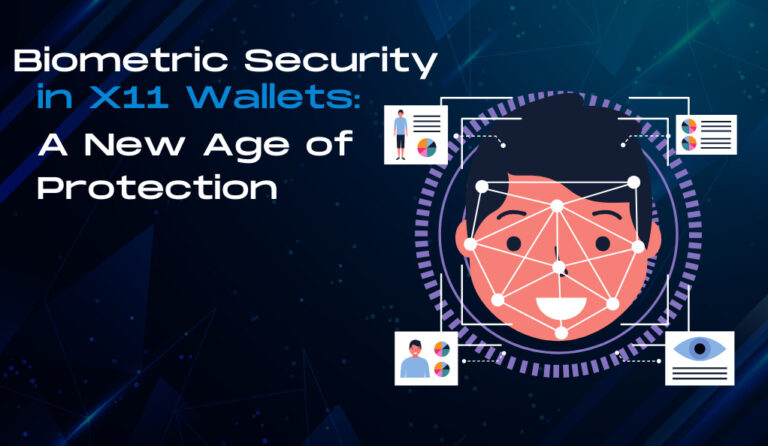In the vast and ever-evolving world of cryptocurrencies, the underlying algorithms play a pivotal role in determining the security, efficiency, and overall functionality of a digital coin. One such algorithm that has garnered attention and intrigue is the X11 algorithm. This section will provide an overview of X11, its historical context, and the unique features that set it apart from its contemporaries.
What is the X11 Algorithm?
At its core, the X11 algorithm is a chained hashing algorithm used for the proof-of-work systems in various cryptocurrencies. Unlike the more commonly known SHA-256 (used by Bitcoin) or Scrypt (used by Litecoin), X11 doesn’t rely on one cryptographic function. Instead, it employs a sequence of 11 different scientific hashing algorithms. This chained approach is where the “X11” name originates, representing the eleven algorithms it utilizes.

Historical Context: The Genesis of X11
Introduced in 2014, X11 was initially championed by the cryptocurrency Dash (formerly known as Darkcoin). The primary motivation behind its creation was to address potential vulnerabilities associated with using a single hashing function. By employing 11 different functions, the X11 algorithm aimed to provide enhanced security against potential threats. Moreover, the creators of X11 sought to design an algorithm that was more energy-efficient and resistant to ASIC (Application-Specific Integrated Circuit) mining, which was becoming increasingly dominant in the crypto mining sphere.
Key Features Setting X11 Apart
| Feature | X11 | SHA-256 | Scrypt |
|---|---|---|---|
| ASIC Resistance | High (initially) | Low | Medium |
| Energy Efficiency | High | Medium | Medium |
| Security | Enhanced due to multiple hashing functions | Standard | Standard |
The Technical Intricacies of X11
Diving deeper into the X11 algorithm requires an understanding of its technical foundation. The beauty of X11 lies not just in its use of multiple hashing functions, but also in the intricacies of how these functions are chained together.
The Eleven Cryptographic Functions
The X11 algorithm doesn’t just randomly employ eleven hashing functions. Instead, it uses a carefully curated sequence of scientific hashing algorithms, each contributing to the overall security and efficiency of the system. These functions are:
- BLAKE
- BMW (Blue Midnight Wish)
- Groestl
- JH
- Keccak
- Skein
- Luffa
- Cubehash
- Shavite
- SIMD
- Echo
Each of these functions has its own strengths and was selected to ensure that the combined algorithm remains resistant to vulnerabilities.
Benefits of the Chained Hashing Approach
- Layered Security: By chaining together multiple hashing functions, X11 ensures that even if a vulnerability is found in one function, the overall system remains secure. This multi-layered approach acts as a series of firewalls, making it incredibly challenging for potential attackers to compromise the system.
- Adaptive Mining: The use of multiple functions means that mining hardware needs to be adaptable. This further reinforces the algorithm’s resistance to ASICs, as specialized hardware would need to be incredibly versatile to handle all eleven functions efficiently.
- Future-Proofing: As cryptographic research progresses, some hashing functions might become obsolete or vulnerable. With eleven functions in play, X11 has the flexibility to replace or modify parts of its sequence, ensuring it remains up-to-date and secure.
Energy Efficiency and ASIC Resistance
One of the standout features of X11, as mentioned earlier, is its energy efficiency. But how does it achieve this?
The chained hashing approach allows for a more even distribution of computational workload. Instead of stressing specific parts of the mining hardware, the workload is spread out, leading to less heat generation and, consequently, less energy consumption.
Furthermore, the complexity of the X11 algorithm, combined with its adaptability, makes it a moving target for ASIC developers. While it’s true that ASICs for X11 have been developed over time, the initial design intention was to level the playing field, ensuring that individual miners using GPUs (Graphics Processing Units) could remain competitive.
Community-Driven Development: A New Paradigm
The technical prowess of the X11 algorithm is undeniably impressive. However, the heart and soul of any cryptocurrency lie not just in its code but in its community. The rise of X11 cryptocurrencies has been significantly influenced by a strong, engaged, and proactive community. Let’s explore the essence of community-driven development and its impact on the world of X11.
The Power of Community in the Crypto World
Cryptocurrencies, by their very nature, are decentralized. This decentralization extends beyond just the technical aspects and into the realm of development and decision-making. A strong community can drive a cryptocurrency’s adoption, steer its development direction, and even influence its market value.
For X11 cryptocurrencies, the community plays a pivotal role in:
- Decision-making: Proposing and voting on new features, changes, or directions for the cryptocurrency.
- Development: Contributing to the code, fixing bugs, and enhancing the system.
- Promotion: Spreading awareness, driving adoption, and fostering a broader user base.
Community-Driven Development vs. Traditional Models
Traditional software development often follows a top-down approach, where decisions are made by a select few and then implemented by the development team. In contrast, community-driven development in the crypto space is more democratic. It’s a bottom-up approach where:
- Everyone has a voice: Every member can propose changes, improvements, or new directions.
- Transparency is key: All decisions, discussions, and developments are open for everyone to see, fostering trust and collaboration.
- Meritocracy reigns: The best ideas rise to the top, not just the ones proposed by the most influential members.
Examples of Successful Community-Driven Projects in the Crypto Space
- Dash: As the pioneer X11 cryptocurrency, Dash has a robust governance system where proposals are voted on by the community. This system has led to numerous successful community-driven initiatives and features.
- PivX: Another X11 cryptocurrency, PivX emphasizes community governance, with a focus on privacy and decentralization. The community’s active involvement has been instrumental in its growth and development.
X11 Cryptocurrencies in the Spotlight
While the X11 algorithm serves as the backbone, it’s the cryptocurrencies built upon this framework that truly bring it to life. Let’s shine a spotlight on some of the most notable X11 cryptocurrencies, exploring their unique features, market performance, and adoption trends.

Dash: The Pioneer of X11
- Introduction: Originally known as Darkcoin, Dash was the first cryptocurrency to implement the X11 algorithm. It has since become one of the most recognized names in the crypto space.
- Unique Features: Dash introduced the concept of “Masternodes,” which play a role in transaction anonymization and instant transactions. This system allows for features like InstantSend and PrivateSend, setting Dash apart from many other cryptocurrencies.
- Market Performance: Over the years, Dash has seen significant volatility, like most cryptocurrencies. However, its innovative features, combined with a strong community, have ensured its position as one of the top cryptocurrencies by market cap.
Other Notable X11 Coins
- PivX: As mentioned earlier, PivX places a strong emphasis on privacy and decentralization. It has introduced features like zPoS (a privacy-focused staking mechanism) and has a strong commitment to low transaction fees.
- CannabisCoin: Targeted at the cannabis industry, this cryptocurrency aims to make transactions smoother and more efficient for medical marijuana dispensaries.
- MonetaryUnit (MUE): With a focus on creating a sustainable and scalable ecosystem, MUE aims to provide a comprehensive financial solution, from microtransactions to larger financial operations.
Adoption Trends and Real-World Use Cases
The true test of any cryptocurrency is its adoption and real-world utility. X11 cryptocurrencies, with their energy-efficient mining and robust security features, have seen varied adoption rates:
- Retail Acceptance: Dash, being the most prominent X11 cryptocurrency, has seen increasing acceptance among retailers and online merchants. Its fast transaction times and low fees make it an attractive option for everyday transactions.
- Sector-Specific Adoption: Cryptocurrencies like CannabisCoin demonstrate the potential for X11 coins to cater to specific industries, offering tailored solutions to meet unique needs.
- Community Projects: The engaged communities behind X11 cryptocurrencies often launch projects to increase adoption. These can range from educational initiatives to partnerships with businesses and other organizations.
Challenges and Criticisms
No technology, no matter how innovative, is without its challenges and criticisms. X11 cryptocurrencies, despite their unique features and community-driven ethos, have faced their share of hurdles and detractors. This section will delve into some of the most prominent challenges associated with X11 and the criticisms it has faced over the years.
The Debate Over ASIC Resistance
- Initial Promise: One of the primary selling points of the X11 algorithm in its early days was its resistance to ASIC mining. This resistance was seen as a way to democratize the mining process, preventing centralization and ensuring that individual miners could compete fairly.
- The Reality: Over time, as with many other algorithms, ASICs specifically designed for X11 were developed. This development somewhat eroded the algorithm’s initial promise of a decentralized mining landscape.
- Community Response: The emergence of X11 ASICs sparked debates within the community. While some argued for changes to restore ASIC resistance, others believed that the evolution towards ASICs was a natural progression that could enhance network security.
Security Concerns and Potential Vulnerabilities
- The Strength of Chaining: While chaining 11 hashing functions provides a multi-layered security approach, it also introduces complexity. With complexity comes the potential for unforeseen vulnerabilities.
- Specific Algorithm Concerns: Over the years, cryptographic researchers have raised concerns over potential vulnerabilities in some of the individual hashing functions used in X11. While no significant breaches have been reported, the presence of potential vulnerabilities remains a point of contention.
Adoption and Market Volatility
- Price Fluctuations: Like all cryptocurrencies, X11-based coins have experienced significant market volatility. These fluctuations can be attributed to various factors, from broader market trends to specific developments within the X11 community.
- Competition: With the ever-growing number of cryptocurrencies and algorithms, X11 faces stiff competition. Staying relevant requires continuous innovation, community engagement, and adaptability.
How the Community Addresses Challenges
- Forking and Updates: In response to challenges, especially those related to security and ASIC resistance, some X11 cryptocurrencies have considered or implemented forks to introduce changes and improvements.
- Open Dialogue: The community-driven nature of X11 cryptocurrencies ensures that challenges and criticisms are openly discussed. This transparency fosters trust and allows for collective problem-solving.
- Research and Collaboration: The community often collaborates with cryptographic researchers and experts to address potential vulnerabilities and enhance the algorithm’s security and efficiency.
The Future of X11 and Community-Driven Development
As we navigate the intricate tapestry of X11 cryptocurrencies, it’s essential to cast an eye towards the horizon. What does the future hold for X11 and its community-driven development model? Let’s explore some predictions, trends, and potential innovations that might shape the next chapter of this fascinating journey.
Predictions and Trends for the Coming Years
- Increased Specialization: As the cryptocurrency market matures, there’s a growing trend towards niche solutions catering to specific industries or challenges. X11 cryptocurrencies, with their adaptability and engaged communities, are well-positioned to develop specialized solutions for various sectors.
- Enhanced Focus on Sustainability: The environmental impact of cryptocurrency mining has been a hot topic. Given X11’s energy-efficient design, it’s likely that there will be a renewed interest in further optimizing its energy consumption, making it even more sustainable.
- Integration with Decentralized Finance (DeFi): DeFi has taken the crypto world by storm. X11 cryptocurrencies, with their robust security and engaged communities, might explore deeper integrations with DeFi platforms, offering new financial products and services.
The Role of Community-Driven Development in Ensuring Adaptability and Resilience
- Rapid Response to Challenges: A proactive and engaged community can quickly address emerging challenges, from security threats to market shifts. This agility ensures that X11 cryptocurrencies remain resilient in a rapidly evolving landscape.
- Harnessing Collective Intelligence: The collective knowledge, expertise, and creativity of the community can drive innovation, ensuring that X11 remains at the forefront of cryptographic and financial advancements.
- Strengthening Decentralization: As centralization concerns grow in various cryptocurrency networks, the community-driven model of X11 can serve as a beacon, emphasizing the importance of decentralization in decision-making, development, and governance.
Potential Innovations and Evolutions in the X11 Algorithm
- Algorithmic Tweaks: As cryptographic research progresses, there might be opportunities to replace or enhance some of the eleven hashing functions in X11, ensuring it remains secure and efficient.
- Enhanced Privacy Features: With growing concerns about financial privacy in the digital age, X11 cryptocurrencies might introduce more advanced privacy features, building on the foundations laid by features like Dash’s PrivateSend.
- Interoperability with Other Networks: As the crypto ecosystem grows, there’s a growing emphasis on interoperability. X11 cryptocurrencies might explore bridges, sidechains, or other mechanisms to interact seamlessly with other blockchains and networks.
Conclusion
The journey of X11 cryptocurrencies offers a compelling narrative on the symbiotic relationship between cutting-edge technology and a vibrant, engaged community. The X11 algorithm, with its unique blend of security, efficiency, and adaptability, serves as a robust foundation. Yet, it’s the community’s passion, innovation, and resilience that truly bring it to life, driving its evolution and ensuring its relevance in the ever-changing crypto landscape.
As the world of digital assets continues to expand and evolve, the story of X11 stands as a testament to the transformative power of collective action in the decentralized realm. It underscores the boundless possibilities that arise when technology and community converge, reminding us of the potential that lies ahead when we collaborate, innovate, and dream together.
At axerunners.com, our goal is to furnish well-rounded and trustworthy information regarding cryptocurrency, finance, trading, and stocks. Nonetheless, we avoid providing financial advice and instead encourage users to conduct their own research and meticulous verification.
Read More












